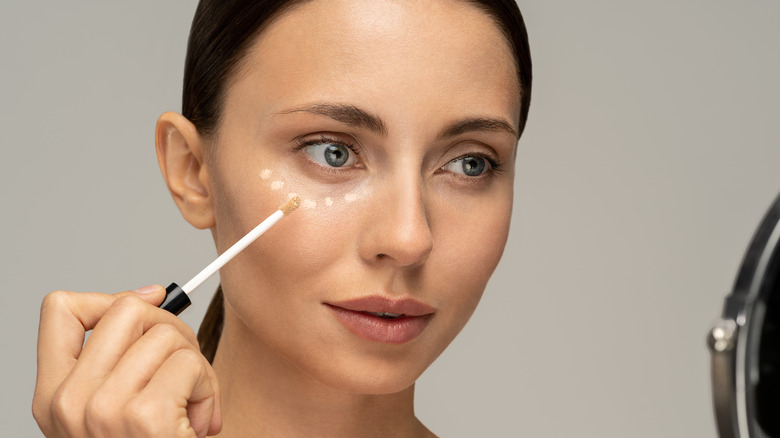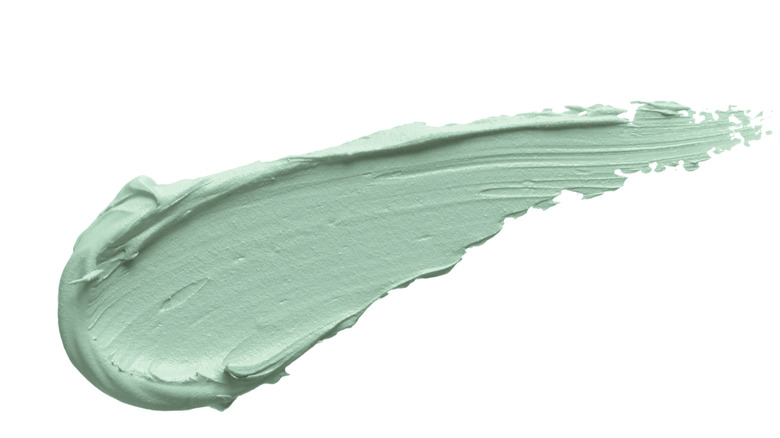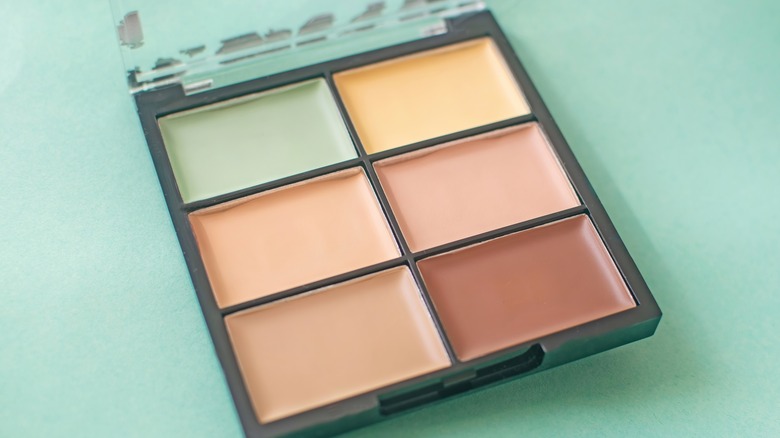At What Point In Your Makeup Routine Should You Apply Color Corrector?
Having an uneven skin tone is something we can all relate to. Most of us have issues with hyperpigmentation, dark under-eye bags, and even just general discoloration on our faces. This makes applying makeup more stressful than it needs to be because it means more concealer on these areas as well as using more product overall. If you can relate, then you know how frustrating it can be to use layer upon layer of makeup and still have visible discoloration.
Fortunately, this is becoming a thing of the past as more people become aware of color correction. Color correction is all about using your skin's opposite colors to tone down and completely conceal blemishes and discoloration. While this isn't a new concept, many of us are so perplexed as to how to pull it off that it may as well be witchcraft. Before you pick up the stakes and pitchforks, you should understand that color theory isn't magic.
You too can neutralize the spots and blemishes on your face and balance out your skin tone once you understand the color wheel and how it relates to your complexion.
Color correction comes before your foundation and concealer
When you start learning about color correction, it's super confusing — especially while watching tutorial videos of people adding all sorts of colors to their faces. But color correction is the very definition of trusting the process. Naturally, though, if you're new to using different shades of concealer on your face, then you may be unsure as to what stage to apply them all.
Stila Cosmetics Global Creative Director and celebrity makeup artist Charlie Riddle told Instyle that he prefers to get in all his color correction before even applying foundation or concealer. According to Riddle, this saves him a ton of time and product. "When I apply to clients, I start by doing a normal skincare routine, priming, and then color correction," he shared. "I end up using less concealer or coverage because I've already addressed the concerns with color correction."
So, color correcting early means less effort and less product wastage — a win-win situation. In addition to this, Riddle suggests using a cream concealer palette that comes with various shades. This will make the process a lot easier by making more shades available to you at once. Once you know when to apply your concealer, you just have to figure out which shades work best for your skin type.
Opposites on the color wheel help to neutralize each other
To perfectly mask your skin's flaws and blemishes, you'll need a range of different concealer shades because, sadly, one shade of concealer might not be enough for a flawless finish. Your skin tone and the nature of your blemishes will determine which concealer colors you use on your face. For instance, renowned makeup artist Bobbi Brown clarified to Vogue that color correction works great for people whose foundation doesn't completely cover up their flaws.
Choosing the correct colors for your skin involves familiarizing yourself with the color wheel and its opposites. According to Brown, gray blemishes can be glossed over using a pink shade of concealer and green hues mask out redness because they are opposites on the wheel. The exact hue of concealer to use depends on your skin color, too.
If you have fair skin, pick a brighter shade of color corrector, while darker-skinned individuals should use a darker shade of the same color. If you have discoloration that ranges toward an orange color, use a blue color corrector to throw it off. It might be a little daunting when you start off working your masking magic, but with practice, you'll get the hang of it. And, once you memorize the color wheel, you'll be a color-correcting pro in no time.


